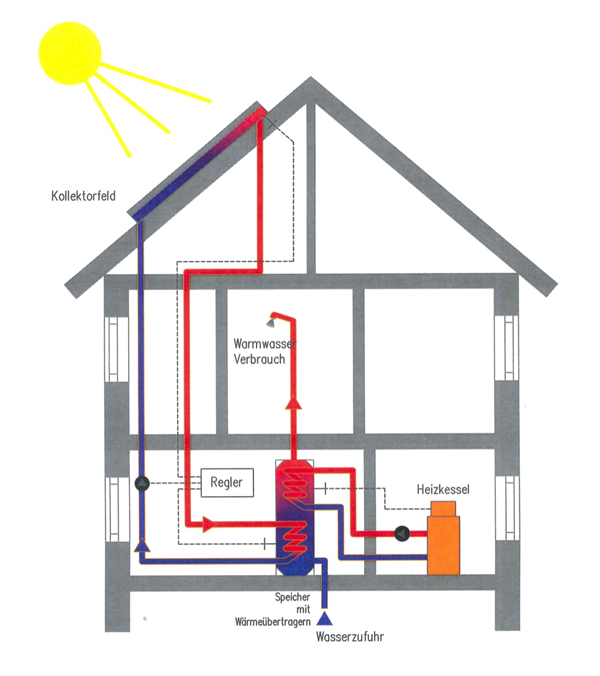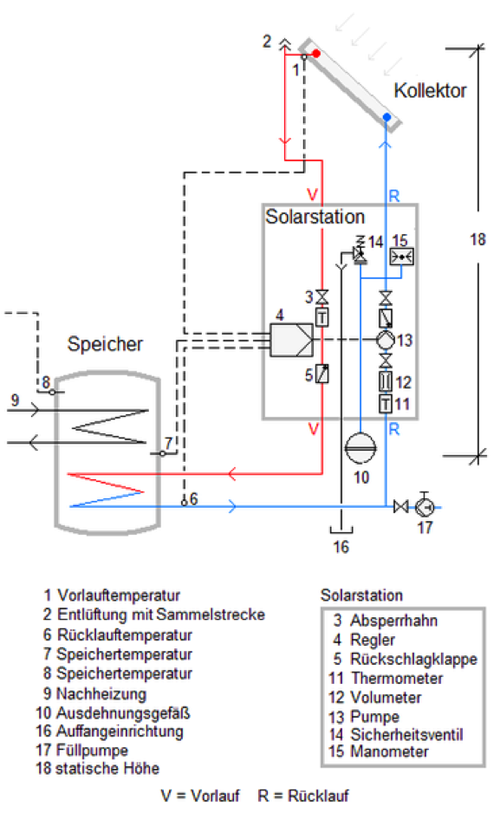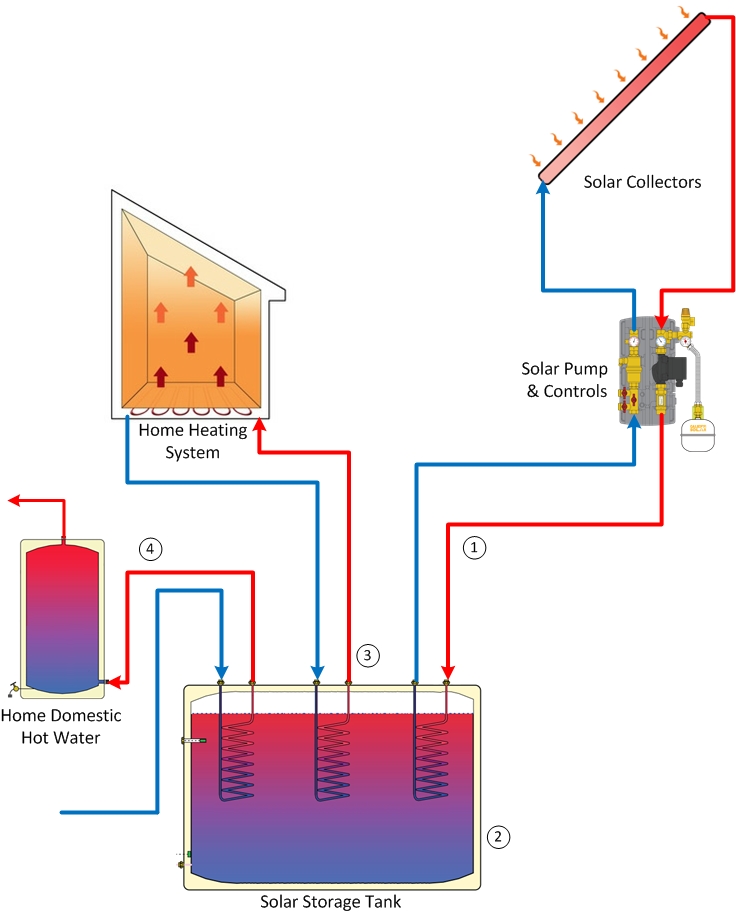How does a solar thermal solar system work?
The basic principle of solar thermal energy is the conversion of solar radiation energy into heat energy (thermal energy).
In a solar collector, a heat transfer medium (usually water with antifreeze) is heated by solar radiation. Heat is transported via this liquid heat medium to a heat exchanger in the building, where water is heated to provide hot water or to support the heating system. The heat transfer medium circulates between the collector and the heat exchanger or storage tank. These have the function of intermediate storage of useful energy (heat).

Figure 2: System of a solar heating system with an additional heating system (bivalent system) (Source: GrAT)
Kollektorfeld: Collector field, Warmwasserverbrauch: Hot water consumption, Regler: Controller, Speicher mit Wärmeübertragern: Storage tank with heat exchangers, Wasserzufuhr: Water supply, Heizkessel: Heating system
A solar controller switches on a circulation pump as soon as the temperature measured at the collector exceeds the temperature in the heat storage tank. The heat transfer medium then transports the heat from the collector to the hot water storage tank.
Figure 3: Solar circuit (source: cinema; http://de.wikipedia.org/w/index.php?title=Datei:Solarkreis.PNG&filetimestamp=20080525114449); picture on the right: http://www.gosunward.com



 Disclaimer: Powered by Erasmus+, ACTeco, ASBN and d.sign Gruber & Partner
Disclaimer: Powered by Erasmus+, ACTeco, ASBN and d.sign Gruber & Partner
You must be logged in to post a comment.